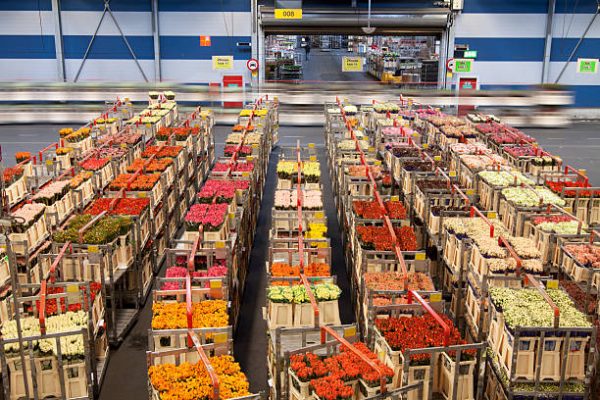Project Report For Agriculture Warehouse
Introduction
Project Report for Agriculture Warehouse is as follows.
An agricultural warehouse, also known as a farm warehouse or agricultural storage facility, is a specialised structure constructed for agricultural product storage and preservation. It acts as a central hub for farmers and agricultural businesses to store, manage, and distribute their produce, hence maintaining quality and extending shelf life.
These warehouses are outfitted with unique features and technologies to provide optimal storage conditions for a variety of agricultural commodities. They are typically constructed of durable materials and have adequate insulation to protect stored products from external influences such as temperature variations, humidity, vermin, and other environmental conditions.
The major function of an agricultural warehouse is to create a controlled environment that aids in the prevention of spoiling, the reduction of post-harvest losses, and the preservation of the quality and nutritional content of agricultural products. Temperature and humidity control systems, as well as ventilation and refrigeration devices, are installed to adjust the indoor climate in accordance with the specific needs of various commodities such as fruits, vegetables, cereals, and dairy products.
Additionally, agricultural warehouses frequently include features such as grading and sorting spaces, packing and labelling areas, and loading docks to aid efficient handling and delivery. They may also have quality control laboratories for testing and inspecting stored products to verify compliance with industry norms and laws.
These warehouses serve an important part in the agricultural supply chain, allowing farmers to store their crop during peak production seasons and strategically market their products when demand is high or prices are favourable. They also provide a buffer against uncertain weather or market swings, allowing farmers to keep their products until market conditions improve.
Additionally from storage, agricultural warehouses can also serve as teaching facilities, hosting workshops and instructional programmes on best practices in post-harvest management, quality control, and storage procedures. They can help the agricultural sector grow by supporting sustainable farming practices and minimising food waste.

Types Of Agriculture Warehouse
Cold Storage Warehouses: These warehouses include refrigeration systems to keep temperatures low and are generally used to store perishable things such as fruits, vegetables, meat, and dairy products. They aid in the slowing of the ripening process and the preservation of the produce’s quality.
Grain Silos: Grain silos are tall cylindrical constructions that store grains including wheat, corn, rice and barley. They are intended to guard against pests, moisture, and temperature changes. To ensure grain quality, silos can be composed of metal or concrete and include elements such as ventilation systems and airtight seals.
Dry Storage Warehouses: These warehouses are used to store agricultural commodities that do not require refrigeration. They give cover from the elements and keep commodities such as dried fruits, nuts, seeds, and non-perishable food products from moisture, pests, and sunshine.
Bulk Storage Warehouses: These warehouses are meant to store vast quantities of agricultural commodities in bulk, such as grains, fertilisers, or animal feed. They are frequently outfitted with mechanical equipment to facilitate bulk cargo loading and unloading.
Market Potential Of Agriculture Warehouse
At a CAGR of 6.4%, the market for farm product warehousing and storage is anticipated to increase from $114.92 billion in 2027.
These statistics include the global market size, regional shares, competitors with a farm product warehousing and storage market share, in-depth market segments, market trends and opportunities, and any further developments. This market research study on agricultural product warehousing and storage gives you a comprehensive view of everything you need and provides a detailed analysis of the existing and future state of the sector.
Revenues earned by companies by assisting in the price stabilisation of agricultural commodities are included in the Farm product warehousing and storage market. The value of associated goods sold by the service provider or included in the service providing is included in the market value. Included are only commodities and services transferred between companies or sold to end users.
Project Report Sample On Agriculture Warehouse
Need Help?
Create 100% Bankable Project Report

